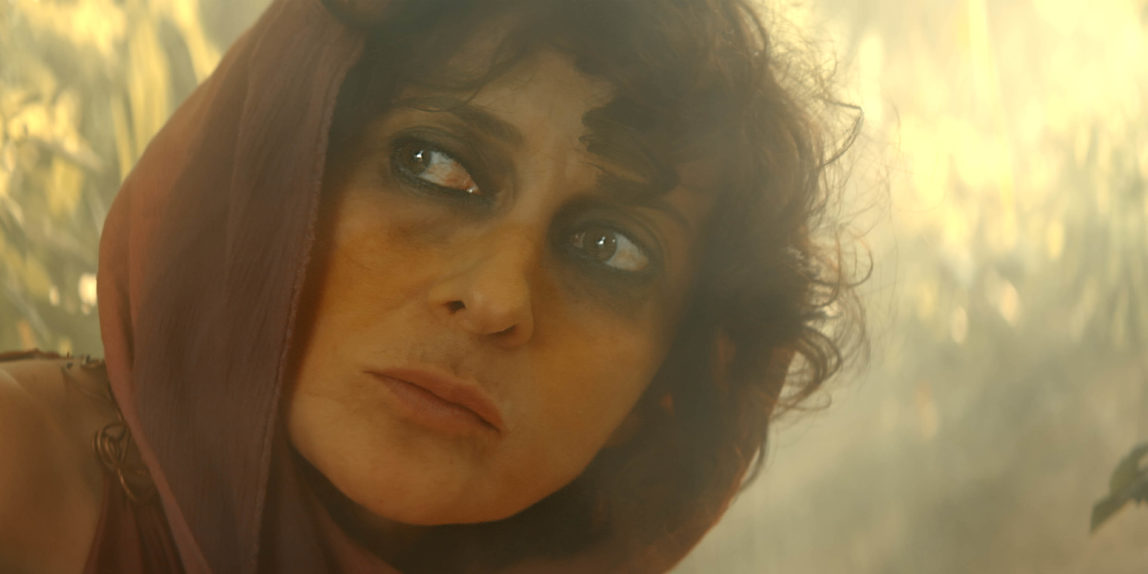‘Nam Sibyllam quidem Cumis ego ipse oculis meis
Vidi in ampulla pendere, et cum illi pueri dicerent:
Σιβυλλα τι θελει?
respondebat illa:
αποθανειν θελω.’
T. S. Eliot – The Waste Land
Infatti ho visto con i miei occhi la Sibilla, a Cuma,
pendere in un’ampolla,
e quando i ragazzi le chiedevano:
‘Sibilla, cosa desideri?’,
ella rispondeva:
‘Morire.’
Divination separates time and ‘inscribes’ it in a volatile trace; as if it divides, in the crumbly powder of the prophecies, that extravagance and that plant flocculation that the divine pneuma – the Apollonian flatus vocis and corporis – attributes to Time. The sibyl practices the art of mantic and only wishes to ‘die’… crumbling and remaining the echo – the cicada that chirps in the summer-.
Near Lake Avernus; the entrance of Hades, the νέκυια begins: this is the navel of the world, the omphalòs or the locus that ‘marks’ the threshold between phenomena and Manes. Meanwhile the sibyl chews laurel – to get stoned – ‘sweet vapors’ – which filter through cracks in the ground -; formidable (in etymology) sips of poison further induce the trance.
Basically what she evokes is this landscape. A specific site, as for land-artists; where there is nothing but ‘space’ in itself.
The title of ‘Sibilla Cumana’ belonged to the high priestess of the oracle of Apollo (Hellenic solar divinity) but also of Hecate (ancient pre-Hellenic lunar goddess). Apollo therefore: that ‘sun in itself’. But also Hecate: lunar goddess of spells, ghosts and intersections, goddess of transformation. ‘She who possesses the keys to the Cosmos’. Heavenly or infernal. Psychopump deity, able to travel freely between the world of men, the gods world and the realm of the dead, coming before Greece; from the East, from Elsewhere. Related to Dionysus – opposite to Apollo -. Sun and moon. West and East.
If the ‘sweet vapors’ of Apollo emanate, it is from the Chthonic Earth’s bottom rising.
So that ghost of our experineces winking, it’s the same ‘space’ as genius loci.
‘Sibilla’ is a film about Time anamorphized into ‘Space’: a ‘drugged landscape’, an azimuth. Whose sign can only be evoked, divined by a soothsayer in fact. Finally, if the sibyl does not want anything but ‘death’; and if her ‘voice’ remains as phoné; this invoked ‘space’ – this azimuth – is therefore a visual and sound horizon – aneuphoné. Twisting in flute music and enveloped by the iridescence of the sunset.
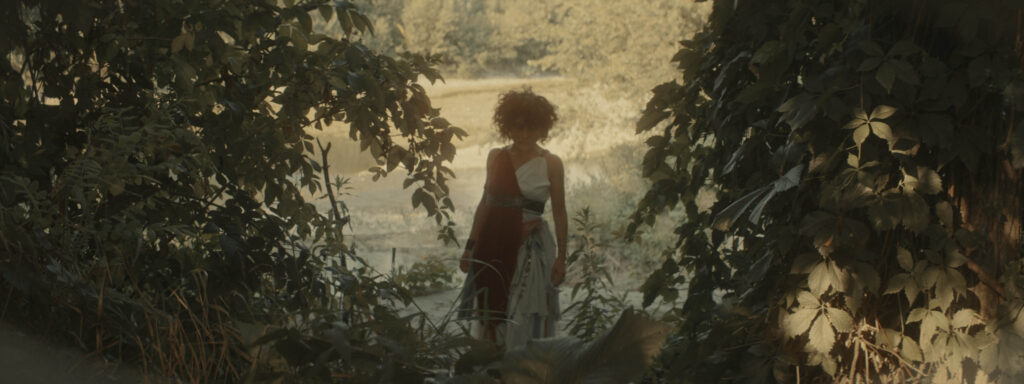
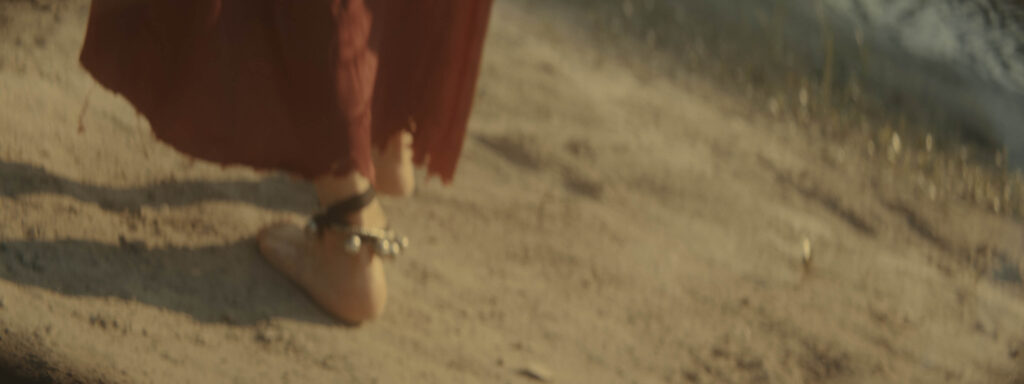
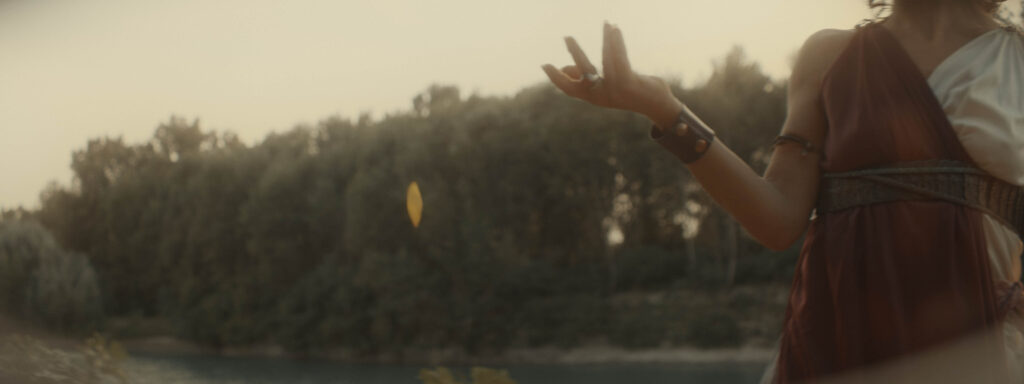
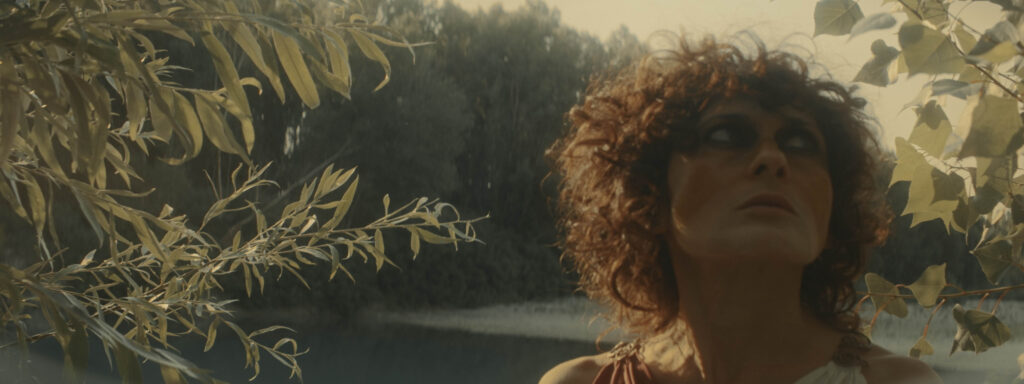
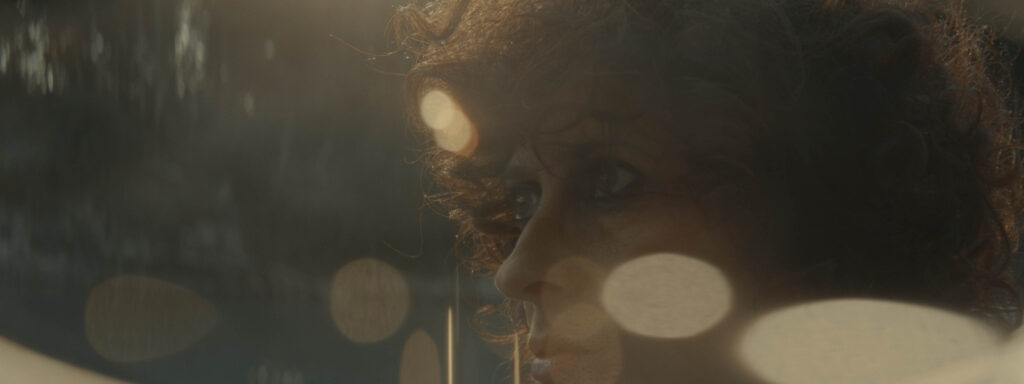
La divinazione disgiunge il tempo e lo ‘inscrive’ in una traccia volatile; come se separasse, nella friabile cipria dei vaticini, quella stravaganza e quella flocculazione vegetale che il pneuma divino – l’apollineo flatus vocis e corporis – attribuisce al Tempo. La sibilla esercita l’arte mantica e desidera unicamente ‘morire’… sfrollarsi e rimanere l’eco – la cicala che frinisce nell’estate -.
Presso il lago d’Averno; l’entrata dell’Ade, comincia la νέκυια: questo è l’ombelico del mondo, l’omphalòs ovvero il locus che ‘segna’ la soglia tra i fenomeni e i Mani. Mentre la sibilla mastica l’allòro – per allucinarsi -, ‘dolci vapori’ – che filtrano da fessure nel terreno -; formidabili (in etimo) sorsate di veleno inducono ulteriormente la trance.
Ciò che in fondo Lei evoca è questo paesaggio. Un sito specifico, come per i land-artisti; dove non si dà altro che lo ‘spazio’ in sé medesimo.
Il titolo di Sibilla Cumana era proprio della somma sacerdotessa dell’oracolo di Apollo (divinità solare ellenica) ma anche di Ecate (antica dea lunare pre-ellenica). Apollo dunque: quel ‘sole in sé’. Ma pure Ecate: lunare dea degli incantesimi, degli spettri e degli incroci, dea della trasformazione. ‘Colei che possiede le chiavi del Cosmo’. Celeste o infera. Divinità psicopompa, in grado di viaggiare liberamente tra il mondo degli uomini, quello degli dèi e il regno dei morti. Che viene prima della grecità; dall’Oriente, dall’Altrove. Imparentata con Dioniso – opposto ad Apollo -. Sole e Luna. Occàso e Oriente.
Se i ‘dolci vapori’ d’Apollo promanano, è in fondo dalla Terra Ctonia che salgono.
Lo ‘spazio’ come genius loci è allora quel fantasma delle nostre esperienze che ammicca.
‘Sibilla’ è un film sul Tempo anamorfizzato in ‘spazio’: un ‘paesaggio drogato’, un azimut. Il cui segno non può che essere evocato, divinato da un’indovina appunto.
Se la sibilla infine non desidera che la ‘morte’; e se di lei permane piuttosto la ‘voce’, phoné; questo ‘spazio’ invocato – questo azimut – è dunque un orizzonte visivo e sonoro – aneuphoné. Serpeggiante in una musica di flauti e avvolto dall’iridescenza del tramonto.
Full Cast
Ludione Productions 2020
Acting – Elena Falciano
Cinematography, Composing and Editing – riccardo vaia/cristina pizzamiglio
Music and Sound Design – Endimione
Scenery and Art Director – Simone Racheli
Full Tech Specs
4K2D
Color, Sound
Runtime: 14’10’
Aspect Ratio: 2,66:1
Camera and Lenses – BMPCC4K, Kowa 16H Anamorphic
Codex – BlackMagic RAW (2.8K)
Cinematography Process – BlackMagic RAW (2.8K)
Anamorphic Source (Kowa Anamorphic Aperture x2)
Da Vinci Resolve 16 Finishing System
Printed Film Format – D-Cinema


